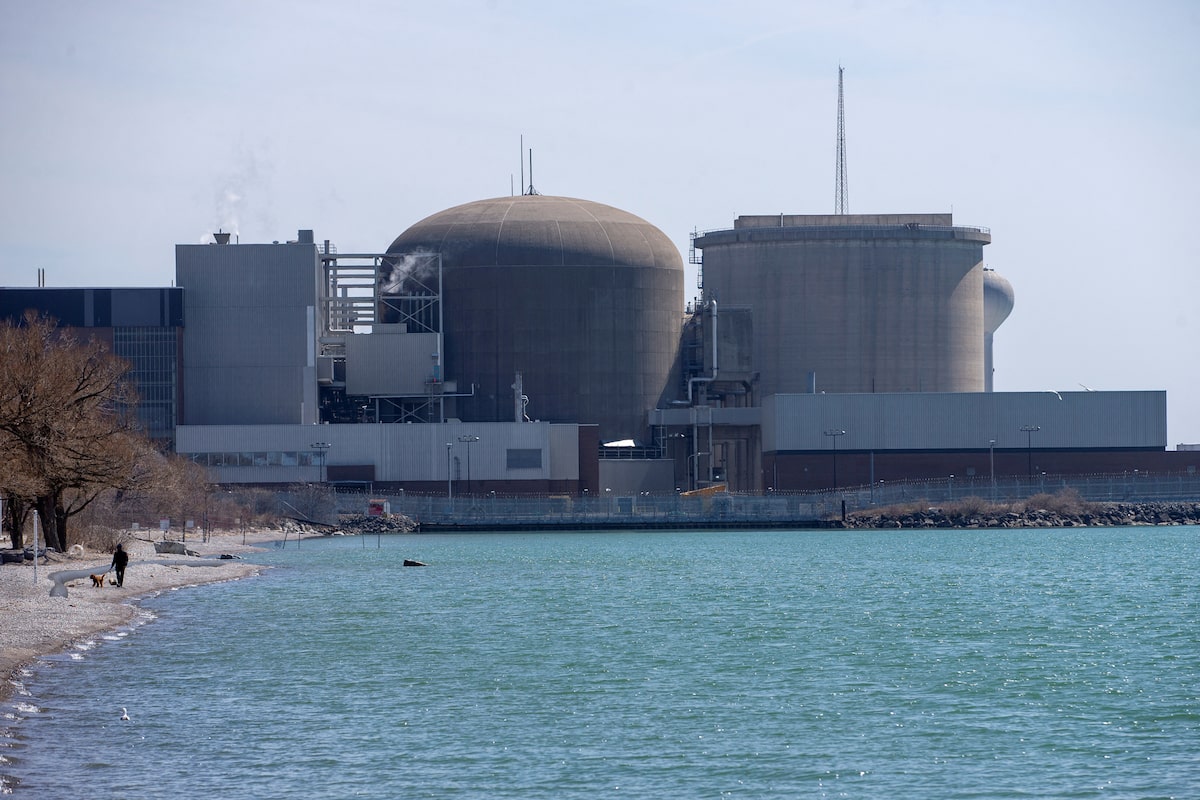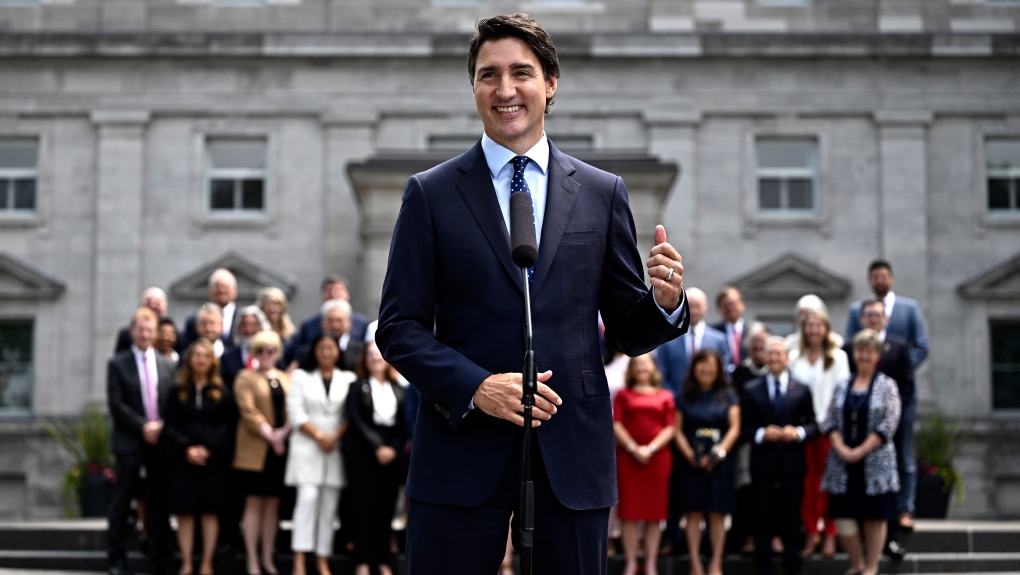
Pxtl
- 🌇 #HamOnt,🍁
- ✍https://Pxtl.ca
- 🦣 https://mastodon.social/@Pxtl
- 🐙🐱https://github.com/Pxtl
- formerly https://sh.itjust.works/u/Pxtl but it doesn’t.
- 16 Posts
- 308 Comments


The problem is that always the economically cleanest approach is to add fees, which are political suicide.
Like, if you add a “disposal fee” to electronics, that creates incentive to build electronics that last long. But Ford chased Wynne out of Ontario Government using their e-waste fees.
The alternative is stupid bulky bureaucracy and regulation. Which voters say they hate, but their actions speak louder.
Carrots are politically better than sticks, but how do you offer a carrot for not doing something? Fee-and-dividend is supposed to do that, but now we’re at “axe the tax” under a fee-and-dividend model.
So maybe bureaucracy and regulation is the way to go.
Ban glue in portable electronics assembly? I’ll never forgive Apple for inventing that nonsense.
Require that any device that is E-Waste have a big ugly “this is e-waste” label on its exterior that end users are totally allowed to remove, but replacing the “this is e-waste” panel with something clean-looking must be at least as easy as replacing the battery.
in the end I went with CanSpace as registrar, and I’m using CloudFlare to actually run the nameservers.
The transfer was kind of a PITA because since the domain transferred from Google to Squarespace to Canspace to then being hosted on CF’s nameservers (but still on Canspace) the DNSSEC meant that CF couldn’t actually get it connected until like 48 hours later. Was quite worried that I’d screwed up somewhere.
in the end I went with CanSpace as registrar, and I’m using CloudFlare to actually run the nameservers.
The transfer was kind of a PITA because since the domain transferred from Google to Squarespace to Canspace to then being hosted on CF’s nameservers (but still on Canspace) the DNSSEC meant that CF couldn’t actually get it connected until like 48 hours later. Was quite worried that I’d screwed up somewhere.

 English
English- •
- 4M
- •
DevOps is bad because for some reason we’ve decided to invent new programming languages that you can’t debug locally and so you have to keep pushing commits to the pipeline server. It’s bullshit.
“Why do you write all your pipelines as shell scripts and then wrap them in yaml at the very end”?
Because then I can run them locally quickly and test individual components of them instead of “edit, commit, push, wait 10 minutes, read error message, repeat”.

- •
- globalnews.ca
- •
- 9M
- •


Yeah I love his videos but I hadn’t seen anything about the whole home issue of “omg this is way more power hosue-wide”.
The idea of smart switching sounds neat - that would basically mean “you can’t run your dryer and have hot water and charge your car at the same time”, right? But, like, in an automated way not just “it throws the breaker”.


I’m aware but I haven’t heard people’s experiences with them. I ask because I’m shopping for water heating right now and debating the expense of getting 240 run to the water heater for a heat pump.
Electric tankless sounds impossible (yes, I know they exist, I just mean they don’t sound like something that should be able to), since the amount of BTUs required to run a gas tankless at peak is absolutely nuts – tankless gas water-heaters run on 3/4" pipe instead of the normal 1/2" since they need to have so much burst heat. That doesn’t sound possible for electric.
I agree they’re a trade-off, but they’re a necessary middle-step in the process of getting off of carbon fuels while the battery industry develops enough to fully convert the rest of the auto industry.
I’d rather see every passenger-vehicle made after 2020 be a PHEV than a handful of guys driving around in Teslas and Lightnings with bloated batteries while 95% of new cars on the road are still gas-burners.
Want to save the electric car dream? Subsidies aren’t enough. Large EVs are far more expensive than conventional large vehicles, and road-tanks like the F150 represent a threat to the kind of small vehicles that we should be supporting. Subcompacts, e-bikes, and new things filling the space in-between (eg enclosed electric motorbike-class vehicles like the Arcimoto) are an important part of the post-fossil-fuel future, but they’re not safe to take on to a road full of gigantic motor bricks. I drive a Prius Prime and the darn thing’s roof is lower than the hood of some jacked-up pickups.
I’m not saying that pickups and similar vehicles should be illegal, but we need stronger disincentives for people buying such things. Like rate vehicles based on various objective criteria - bumper-compatibility, mass, front cross-section, front visibility, visual obstruction to other drivers, etc. and then classify the more dangerous ones as “high risk vehicles”, and give those ones stricter licensing requirements (like a class D) and stricter penalties for infractions. Need a pickup for your job? Then you’re a professional, and you can deal with professional vehicle licensing requirements.
I mean, if you need one to pull a boat? Well, you can afford some extra fees (or fines for infractions), and to go through a stricter licensing process.
Also, PHEVs are a seriously underrated option. I think we leapfrogged something important with this jump to full BEVs. I love my Prius Prime - I live in Hamilton, which is built as an old-fashioned streetcar-suburb, and daily commute rarely hits the gas-engine.


I love STV but imho it just doesn’t work for Canada. We have too many massive wilderness ridings. If you had a heavily-urbanized province like if Southern Ontario was its own province, I’d say it would be the perfect system for that area.
Here’s why: The northern areas of every province are extremely low-population and are enormous. For example, if BC had 5-seat-riding STV federally, the entire province north of Kamloops would be one massive riding. It’s possible all their MPs would be from the populated end of the riding, so that people in the ass-end of the riding live over 1000km from their “representative”. Ontario would look similar - Northern Ontario is probably the most sparsely-populated area outside of the Territories. That’s not an acceptable outcome – being 1000km from your MP means you are not represented.
Contrast this vs Mixed Member Proportional, where local ridings still exist - under MMP, 2/3 of the seats are normal-ass ridings that work exactly like we do today. Then we group them together in “regions” and back-fill the most popular party-members within that region to make it proportional. A lot of people get upset about non-local representatives, or “unelected party staffer MPs” in MMP, but it doesn’t have to be that way.
The plan that was floated for BC is actually really awesome – imho it should be applied Canada-wide. It’s basically a vanilla MMP plan but there are details that do great work to mitigate the main complaints about MMP:
-
Take the map of Canada and carve it up into regions of 14 ridings (obviously for provinces with less than 14 ridings, just take the whole province). These are our “regions”. So, for example:
- Saskatchewan is one “region”
- Peel Region (Mississauga + Brampton + nearby towns & exurbs) is one “region”.
- Niagara Peninsula (including Hamilton) is one “region”.
- A big city like Montreal would probably be 3 different electoral “regions”.
-
Within each Region we have 9 ridings (or 2/3 of the total number of Seats if the Region is smaller than 14 seats). Those are normal-ass elections. So Calgary Centre still has its own MP, and so do more remote areas like Gaspésie—Les Îles-de-la-Madeleine. These ridings are only about 50% larger then our current ridings.
-
The other 5 Seats within the Region are backfill seats, that are used to fill up the Region until the proportion of party-members roughly matches their % of the vote within the Region. So even though the back-fill people don’t represent a riding, they’re still somewhat local. Flin Flon’s non-riding members are still from Manitoba. People in Markham will still have a local MP, but also will have regional MPs from the rest of York. So locality is still good for the regional representatives, and we have a proper local riding MP, we’re not losing that guarantee of locality.
-
Avoid the “nobody elected this asshole” problem with open-lists. The ballot is simple, it has 2 sections:
- A section to pick your local MP, which is exactly as it is today. Pick 1 person here.
- A section to vote for your regional MP, grouped by party, which has multiple options per-party. Pick 1 person here. As a side-effect the person you select here is also your party PR vote.
-
So, we figure out how many seats to back-fill by % of votes per-party (on the regional section) - so if there are 14 seats in a Region, and one party gets half of the regional MP votes, got 5 local seats? They’ll get 2 Regional seats. And which of their Regional candidates get those 2 seats? The 2 that got the most votes.
So it’s not like they’re unelected. They still have to be the most popular people within their party and within the region.
So let’s think a concrete example - imagine Southeastern Quebec region, which includes Quebec City. Generally not a very Red area except for the city itself. The Liberals continue to run Steven Guilbeault in Quebec City itself as a local MP, but to drum up interest they also run Stephane Dion and Joël Lightbound as regional candidates in the Quebec City regional area, including a massive amount of rural and suburban area they expect to get a little support from but generally lose. To pad out the rest of the list, they also run Ricky the Pigfucker as a regional candidate. Now, this is an open list - if the Liberal voters outside of Quebec City really hate Dion, they can still vote for Ricky. And so instead of the expected three MPs for the Quebec region being Guilbuealt (elected directly by Quebec City), Dion, and Lightbound, it’s an upset and they get Guilbeault, Dion, and Ricky the Pigfucker.
And Independants “I don’t want to run as a party” types? They can still run as a local riding MP. They’re not frozen out like most people think of about in “Proportional systems” that are very “party-oriented”.
It’s not a perfect system. It’s very party-oriented in the way that STV isn’t. It’s weirdly complicated. But it works. It’s used IRL in real first-world countries like Germany and New Zealand and Scotland. There’s lots of fiddly knobs to argue about like whether it’s okay to add more top-up MPs beyond the fixed size to preserve proportionality (true-MMP vs AMS - personally I’m on the fixed-size side AKA AMS) But with Canada’s geographic considerations, I strongly think it’s our best option.


The problem is that 70 years ago a massive baby-boom happened and there aren’t enough people in Canada to keep the economy and healthcare system running properly as those people all become systemic burdens. Immigration is the only thing that keeps our demographic system from being as upside-down as every other 1st-world country.

And student-immigration is actually the best kind, because they’re young and healthy and already finished the expensive free-education-schooling-years and are ready to go right into the workforce after they dump a crapload of money into the educational economy.
The problem, of course, is that in order to make this work, you have to make sure there’s enough housing. And instead, we stopped building government-funded housing 30 years ago, and we let municipalities declare new housing basically illegal (well, it’s legal if you Know A Guy, which is why all the builders are mobsters now). And also we don’t have enough people to build as much as we need.
So yeah, the Fed has some good ideas and a reasonable top-level economic plan but they’ve screwed up the details catastrophically.
Basically, the “no immigration” path is either Logan’s Run or every young person gets taxed to the gills as we try to support an elder-heavy country on an increasingly anemic economy. How much “opportunity” does that sound like for your kids?
What blockchain doesn’t have high transaction costs once it scales up to large usage? Fundamentally blockchains are about hyper-redundant indestructable storage with expensive costs for writing to that storage to prevent flooding it with garbage. The most mature and sophisticated blockchain that doesn’t involve burning down a forest to solve sudokus is the Ethereum network, which is probably the one to point to when we’re talking about a large blockchain, and that’s one that uses the subcurrency of “gas” to model paying for recording into that ledger.
Are there any blockchains that could handle transaction volumes on the scale of a game-store like Gog or Epic (much less Steam) without putting non-trivial prices on writing the transactions to the ledger?

- •
- www.cbc.ca
- •
- 1Y
- •

- •
- www.canadaland.com
- •
- 1Y
- •

- •
- ontarioliberal.ca
- •
- 1Y
- •

- •
- lemmy.ca
- •
- 1Y
- •














Wait they’re still there? How the hell are they still there?